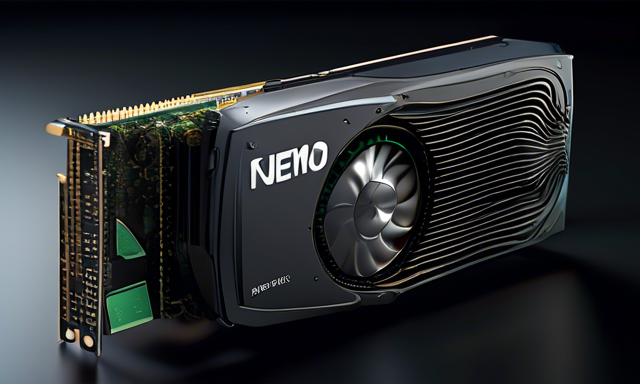Revolutionizing Text Generation with Mistral NeMo 12B Model
NVIDIA and Mistral have introduced the Mistral NeMo 12B model, a cutting-edge language model optimized for exceptional performance on a single GPU, revolutionizing text generation applications. This collaboration promises to redefine the landscape of natural language processing with its innovative approach.
Mistral NeMo 12B Model Overview
The Mistral NeMo 12B model features a dense transformer architecture with a staggering 12 billion parameters. Trained on an extensive multilingual vocabulary of 131,000 words, this model showcases remarkable proficiency in various tasks, including coding, common sense reasoning, mathematics, and multilingual chat applications. When compared to existing models like Gemma 2 9B and Llama 3 8B, the Mistral NeMo 12B model stands out with its superior performance on benchmarks such as HellaSwag, Winograd, and TriviaQA.
- Model Performance Comparison
- Mistral NeMo 12B
- Context Window: 128k
- HellaSwag (0-shot): 83.5%
- Winograd (0-shot): 76.8%
- NaturalQ (5-shot): 31.2%
- TriviaQA (5-shot): 73.8%
- OpenBookQA (0-shot): 68.0%
- CommonSenseQA (0-shot): 60.6%
- TruthfulQA (0-shot): 70.4%
- MBPP (pass@1 3-shots): 50.3%
- Gemma 2 9B
- Context Window: 8k
- Performance Metrics
- Llama 3 8B
- Context Window: 8k
- Performance Metrics
Training and Inference Optimization
The training process of the Mistral NeMo model is powered by NVIDIA Megatron-LM, a PyTorch-based library that offers GPU-optimized techniques and system-level innovations. This library includes critical components such as attention mechanisms, transformer blocks, and distributed checkpointing to facilitate large-scale model training. For inference, Mistral NeMo leverages TensorRT-LLM engines, which compile model layers into optimized CUDA kernels to maximize performance through techniques like pattern matching and fusion. The model also supports inference in FP8 precision using NVIDIA TensorRT-Model-Optimizer, enabling the creation of smaller models with lower memory footprints.
Enhanced Efficiency and Usability
The ability to execute the Mistral NeMo model on a single GPU significantly enhances compute efficiency, reduces operational costs, and ensures improved security and privacy. This efficiency makes the model ideal for a diverse range of commercial applications, including document summarization, language translation, code generation, and multi-turn conversations.
Seamless Deployment with NVIDIA NIM
The Mistral NeMo model is available as an NVIDIA NIM inference microservice, designed to simplify the deployment of generative AI models across NVIDIA’s accelerated infrastructure. NIM supports various generative AI models, offering high-throughput AI inference that scales according to demand, allowing enterprises to enhance token throughput and drive revenue growth.
Flexible Use Cases and Customization
Utilizing the Mistral NeMo model as a coding copilot can provide valuable AI-powered code suggestions, documentation, unit tests, and error fixes. The model’s performance can be further enhanced by fine-tuning it with domain-specific data. NVIDIA offers tools to align the model with specific use cases, ensuring optimal performance across a variety of applications.
Exploring Mistral NeMo
To delve into the capabilities of the Mistral NeMo model, visit the Artificial Intelligence solution page on NVIDIA’s platform. Additionally, NVIDIA offers free cloud credits for testing the model at scale, enabling users to build proof of concepts by connecting to the NVIDIA-hosted API endpoint.
Hot Take: Embracing Innovation with Mistral NeMo 12B
As a crypto enthusiast looking to stay ahead of the curve in the realm of text generation and natural language processing, exploring the revolutionary Mistral NeMo 12B model can open up new possibilities for enhancing your projects and applications. With its exceptional performance, optimized training techniques, and deployment versatility, Mistral NeMo paves the way for cutting-edge advancements in AI technology, offering a glimpse into the future of computational linguistics.





 By
By
 By
By


 By
By
 By
By